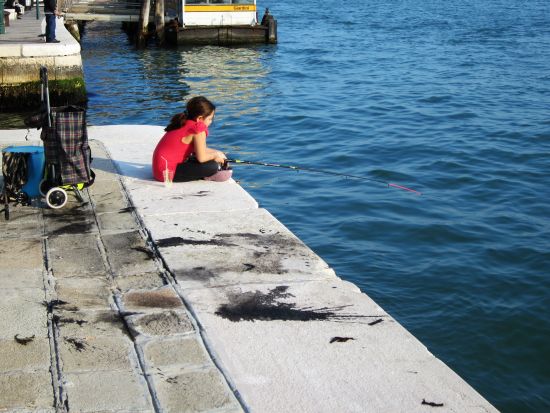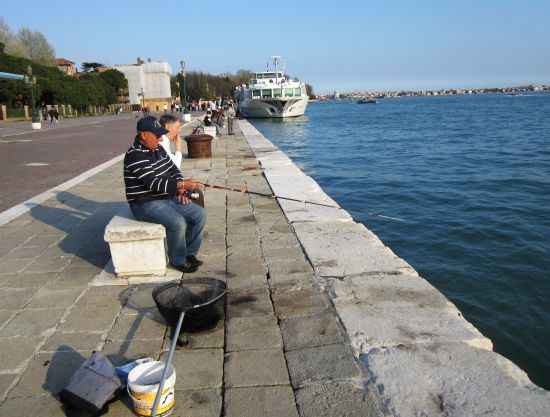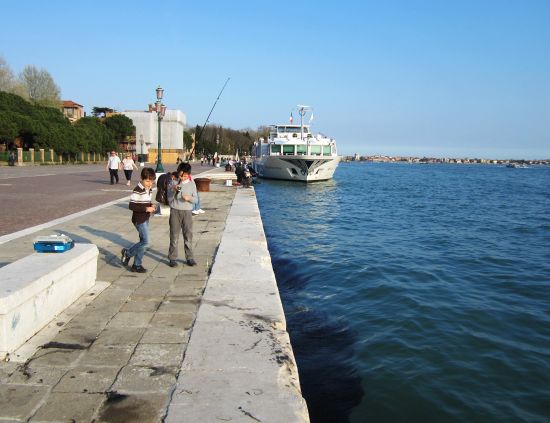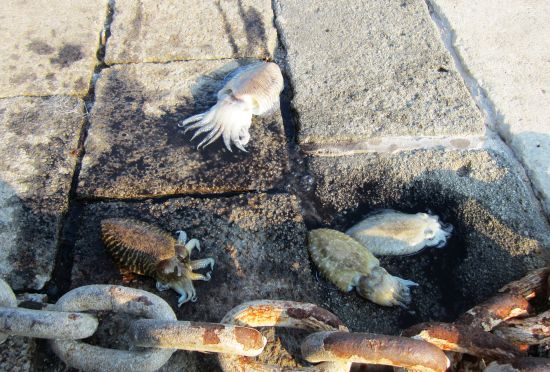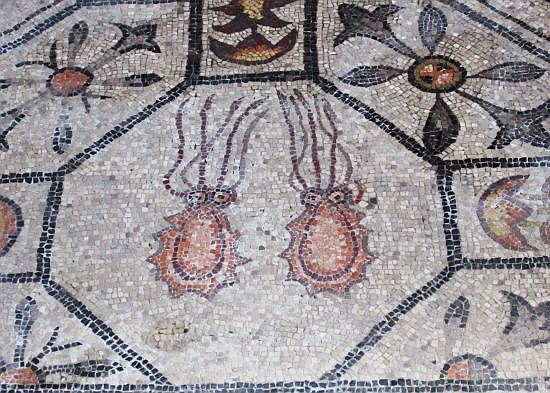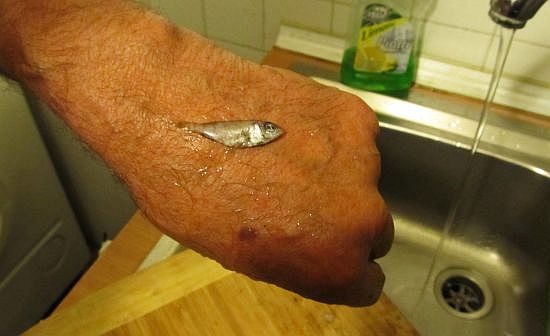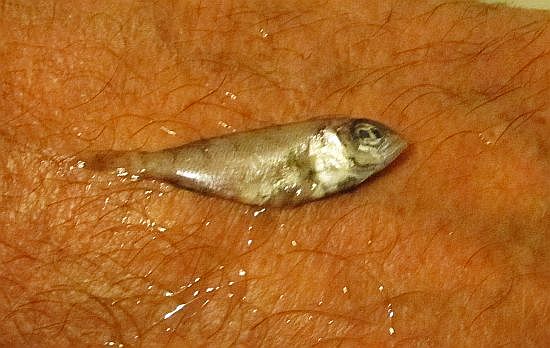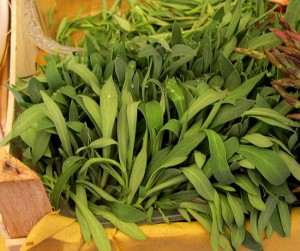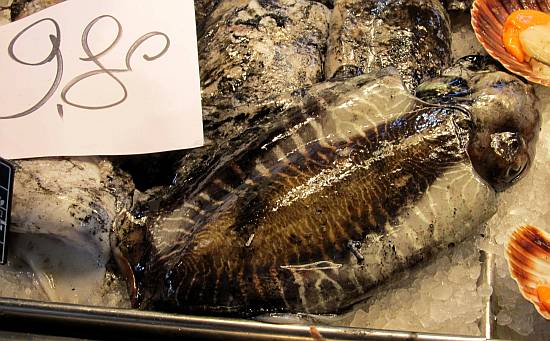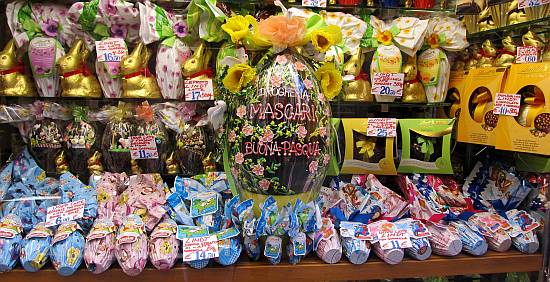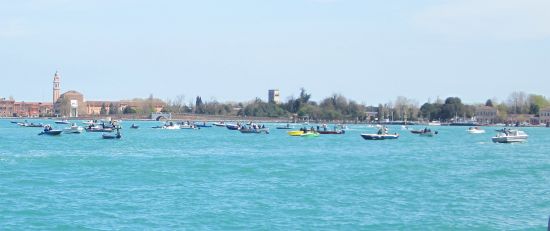
The diluvian spring seems to finally have wrung itself out and today we had sun. We’ve had intermittent sun recently but it didn’t give the impression that it was sincere.
But suddenly, the sun was out. Therefore the laundry was out — I mean, out rejoicing, not out wailing and repenting, and begging to be let back in, as it has been for quite a while. Small but delectable milestone today: Bringing in the laundry and smelling that sun-and-fresh-air aroma in its folds for the first time in 2013. (Someone will tell me it’s nothing more than the detergent I’m inhaling, but they would be wrong.)
And more to the truly cosmic point, the seppie are out. “Out” in the way that a solar flare could be called “out.” A few years ago there were only one or two forlorn little seppie in the entire lagoon, and there were scarcely any to be had in the market, not even for ready money. It was a veritable drought of seppie. Now we’re making up for lost time.
The past few days have seen what must be an underwater stampede of the little nimnods, swarming in from the Adriatic to spawn, because out on the water that stretches from San Nicolo’ on the Lido up the wide canal that goes to Murano there has been a daily conglomeration of boats the like of which I’ve never seen, boats full of men fishing for seppie. I have it on several good authorities that virtually every boat has been going home with something like ten kilos (20 pounds) of cuttlefish.
Then there are the insatiable seagulls, who are out there with the rest of the city, looking for chow. You’ll see the gulls pulling their prey to some nearby surface in order to pierce the seppia’s body sufficiently with their beak to allow the extraction of the very hard-to-chew inner bone. These pale-white ovals of various sizes can frequently be seen floating in the canals, and out in the lagoon, the marine version of the ox-bones flung aside by Viking gorgers.
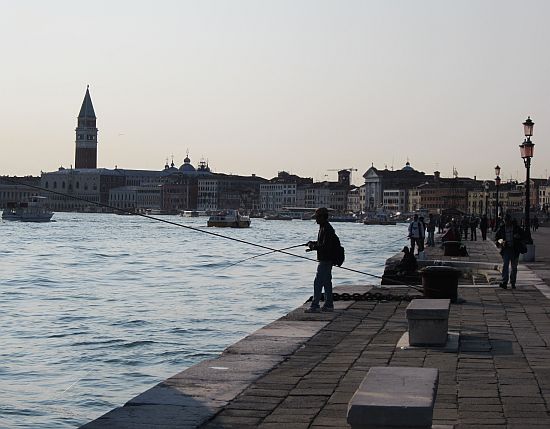
For the many boatless anglers, there’s plenty of room along the fondamente to strew murder and mayhem in the depths. It’s a virtual chorus line of men and children with fishing rods and buckets, and the stones are wildly bespattered with black stains, the parting shots from the truculent creatures unwilling to admit defeat, but whose sac of ink is impotent against the hooks and nets. Of course, they themselves make no effort to resist the lure of whatever’s on the end of the hook, so no use crying afterward. Lino once attracted scores of seppie merely by snagging a piece of white plastic onto his hook and pulling it through the water. They thought it was a seppia, and they were coming to eat it too. Little cannibals.
So spring doesn’t just mean peach blossoms and the dawn trilling of the blackbirds. This year, at least, it means hecatombs of eight-armed mollusks (technically, that’s what they are). I’ll be kind of glad when it’s over. It’s like the tulip craze or something, and only God knows who’s going to eat them all. Nobody can consume everything that’s being hauled out of the water these days, and eventually all the freezers are going to be full.
Just one more thing to worry about.
